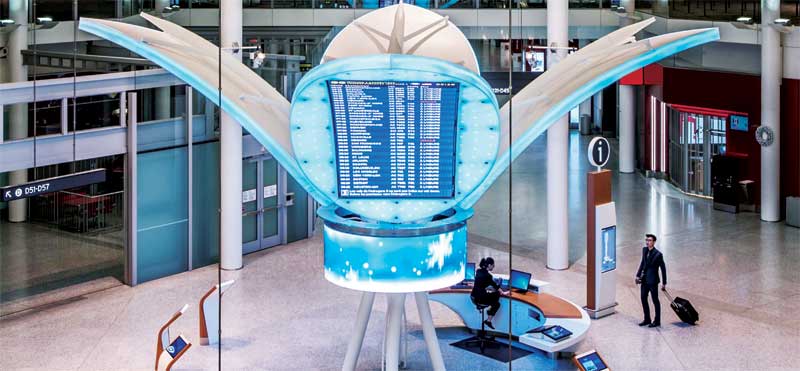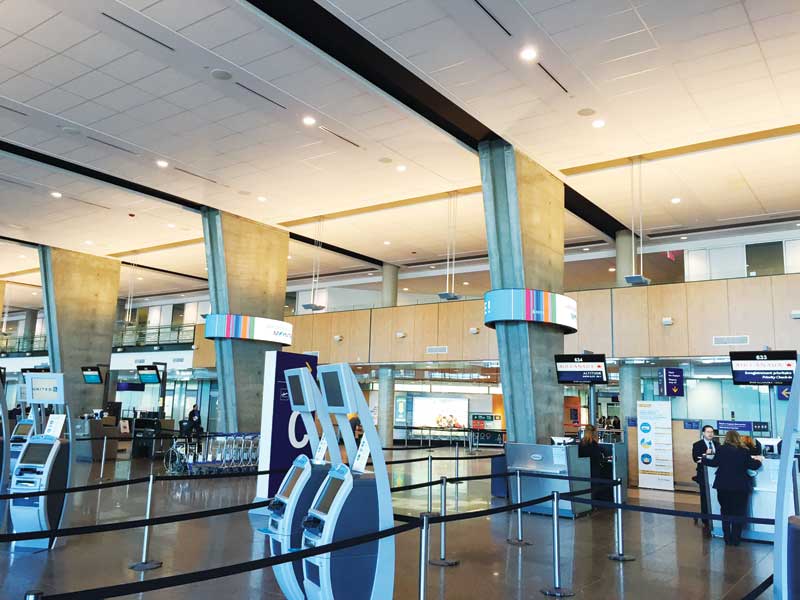
A flower-shaped digital signage structure has become a landmark within Toronto’s Pearson International Airport.
Artistic possibilities
As airports are often the first thing a traveller sees upon arriving in a new city, they also serve an important role in communicating and celebrating the culture of the regions they service. Modern airport design has embraced the cultivation of an immersive and local sense of place, incorporating elements of art and heritage.
The aforementioned flower-shaped structure at Pearson International Airport, for example, somewhat resembles the white trillium, the provincial flower of Ontario. At Singapore’s Changi Airport, meanwhile, two prominent LED-based ‘digital murals’ that display images of the city-state’s history and culture recently won a 2018 InAVation Award in the transport category for Electronics & Engineering (E&E), which developed them in partnership with Montreal-based Moment Factory.
“We are honoured to receive this international award and thank the Changi Airport team, who had the vision and commitment to create a totally new standard for the passenger experience,” says Gary Goh, E&E’s deputy managing director.
Most recently, at Vancouver International Airport, a 3.8 x 2.4-m (12.5 x 7.8-ft) LED display was installed to entertain travellers waiting in line with images of the city’s scenery that move in response to their gestures, as captured by a Microsoft Kinect system and camera. Montreal-based Float4 developed the interactive content for the display, which replaces an earlier, printed map of select flight paths.
“Passengers and employees are loving it,” says Lynette DuJohn, the Vancouver Airport Authority’s (VAA’s) vice-president (VP) of information technology (IT) and chief digital officer (CDO). “We are seeing a lot of smiles on people’s faces!”

At Montreal’s Pierre Elliott Trudeau International Airport, two 360-degree ‘halo’ digital displays have visually transformed otherwise unadorned building columns.
Some airports’ art directors are given annual budgets for beautifying their concourses and terminals with art installations. Increasingly, they realize this capital can be more efficiently spent on dynamic digital signage content than on changing out static artwork time and again.
Unlike LCDs, LED displays can be custom-built in any size, shape or curvature, allowing for creative designs and for seamless integration with existing architecture. At Montreal’s Pierre Elliott Trudeau International Airport, for example, two 360-degree ‘halo’ displays, each measuring 7.3 x 0.6 m (24 x 2 ft), were installed at the U.S. transborder departure gate to transform unadorned building columns into eye-catching attractions.
Further, the brightness of LED displays means they can be installed in airport concourses that are flooded with natural light and still be seen clearly enough.





